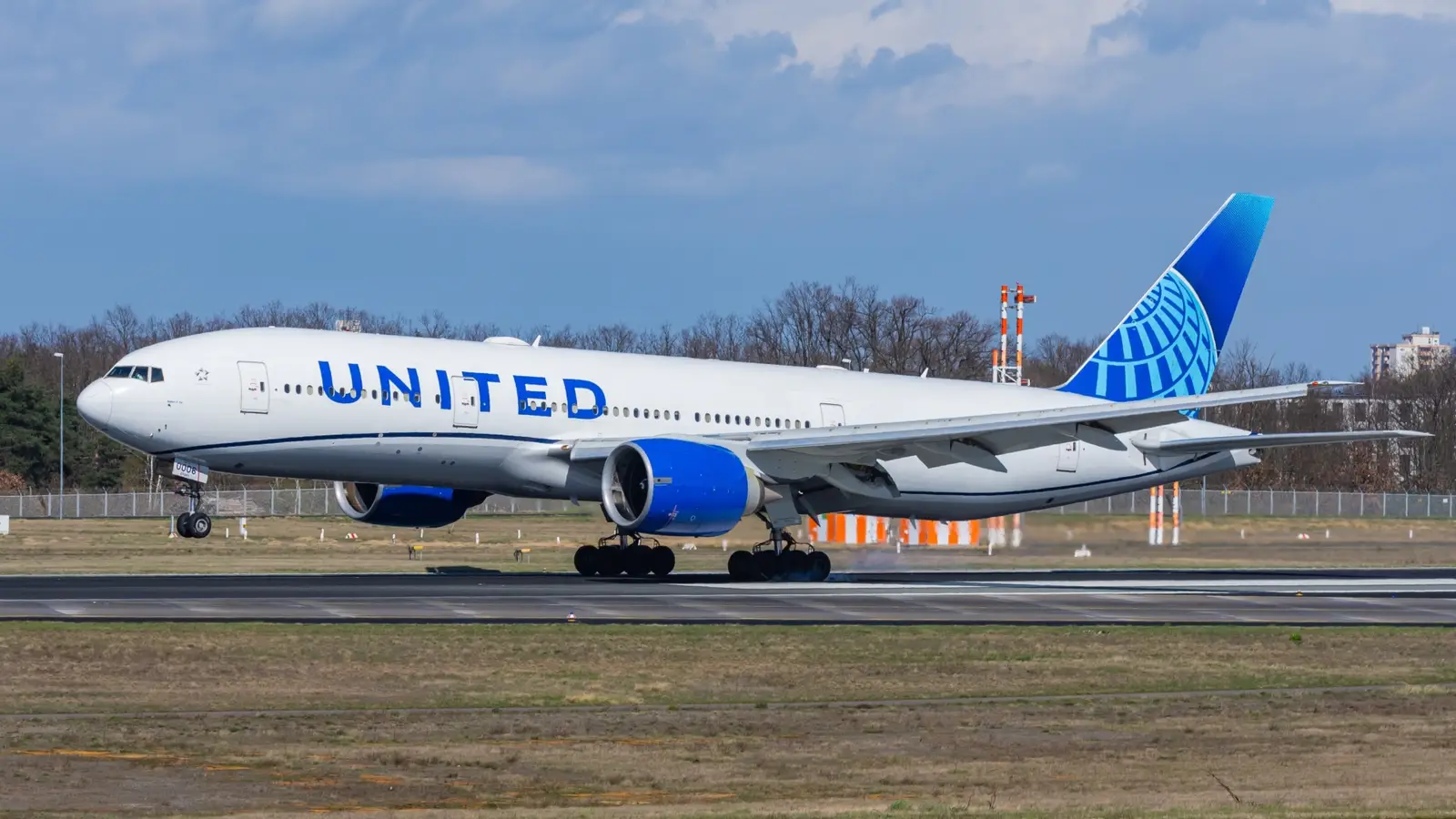
As one of the ‘big three’ US legacy carriers, United Airlines has a huge domestic footprint within the United States of America. While you might primarily associate this coverage with its United Express regional feeder flights, or short-haul services using narrowbody twinjets, widebody aircraft also play a key role on this front.
Indeed, much like its oneworld rival American Airlines, the Star Alliance founding member also flies twin-aisle aircraft from the Boeing 777 family on a wide variety of domestic routes, either due to demand or sheer distance. Using data from Cirium, an aviation analytics company, let’s see what domestic usage of aircraft from the Boeing 777 family looks like at United Airlines this September vs last year.
The Boeing 777-300ER Is Reserved For Longer Domestic Routes
Cirium’s data shows that United Airlines has scheduled 1,263 domestic flights with the 777 this September, representing a 12.2% drop compared to the same month in 2024. However, looking at the family’s individual variants, we can see that internal usage of the larger 777-300ER has actually increased, with 186 flights this time around compared to just 120 back in September of 2024 (a 55% increase).
United’s top route with the Boeing 777-300ER this month is the transcontinental corridor from Newark (EWR) to San Francisco (SFO), with 33 round trips penciled in. This puts it just ahead of Honolulu (HNL) to Guam and San Francisco, both of which will be served daily by the 777-300ER this month. Per aeroLOPA, these jets have a three-class 350-seat layout, with United Airlines explaining in 2017 that:
“United’s 777-300ER aircraft offers a modern, spacious interior envisioned in partnership with design firm PriestmanGoode, including the airline’s all-new United Polaris business class seat. (…) This new seat represents the latest in the continued rollout of United Polaris, the airline’s most significant product transformation in more than a decade.”
Usage Of The Smaller Variants Has Dropped Year-On-Year
The bulk of United Airlines’ domestic usage of the Boeing 777 family this month comes in the form of its smaller variants, namely the 777-200 and the 777-200ER. In September 2025, these two similar models will combine to offer 1,077, which represents an 18.3% annual decrease compared to last September’s 1,319.
A rarity among United’s domestic flights with these jets in September 2025 is the use of the 777-200ER’s lower-density layout. This premium configuration comprises 50 seats in Polaris business class, 24 in premium economy, and 202 in economy, and will be deployed daily between Newark and Los Angeles (LAX) this month. It will also be used on a single rotation between Washington (IAD) and San Francisco.
Other than that, the 777-200 with its higher-density 364-seat layout dominates United’s domestic ‘Triple-Seven’ operations. The top route for these jets, which have 28 business and 336 economy seats, is Newark to San Francisco, with 80 outbound and 81 inbound rotations this month. Elsewhere, September 2025 will see LAX to Newark and Honolulu, as well as Chicago to Denver, served twice-daily by these jets.
A Fleet Of Two Halves
A closer look at the finer details regarding United Airlines’ Boeing 777 sub-fleet shows that it is one of great contrasts. Indeed, according to current data made available by ch-aviation, the carrier’s Boeing 777-300ER jets are just 7.8 years old on average, compared to 25.6 for the 777-200ER and 28.6 for the 777-200.
Another contrast on this front is the split between the 777 family’s smaller and larger variants at United Airlines. Indeed, despite their advanced age, the carrier still has 55 examples of the 777-200ER at its disposal, complemented by 19 777-200s. Meanwhile, its fleet features just 22 larger 777-300ERs.



